Restoration and photos provided by Christoph H., digitally processed by Jock Dempsey.
The "before" photo above is typical of old anvils stored in unheated shops, barns, sheds. . . for a couple years or more.
Nothing in the lifetime of an anvil.
While it looks bad it is not unusual for seldom used shop anvils to rust like this between uses or while in storage.
Markings on this anvil are clear on the upsetting block but difficult to discern the side due to rust.
A little cleaning up and or paint and its as good as new and better than most current new anvils.
The markings all become clearly readable.
This anvil has an upsetting block and a side clip or "voramboss" in German. Both of these were options to the basic anvil.
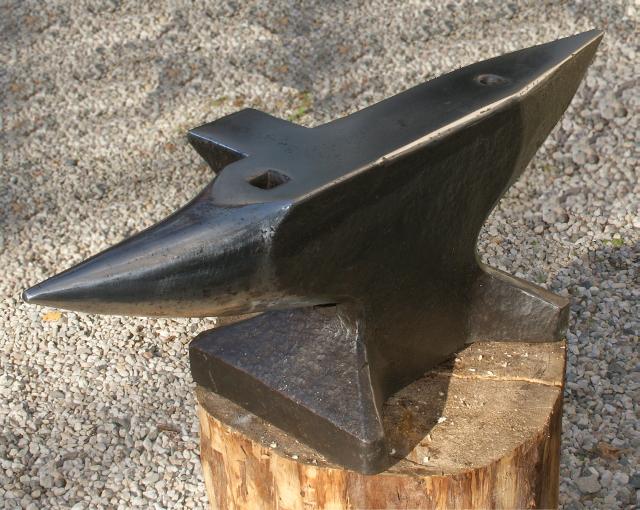
Lots of wire brushing and some sanding/grinding results in a beautful work of art and a wonderful tool.
The lines of the S&H are by far the finest of any anvil made before or since.
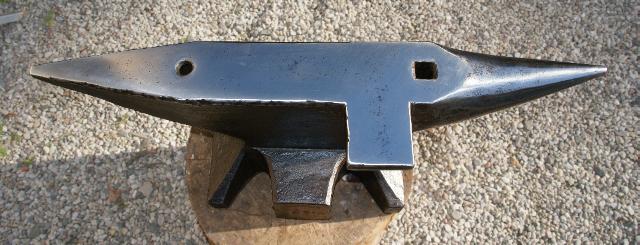
The S&H is a long slender anvil. In larger anvils this is of great benefit as too wide a face width is difficult to work upon.
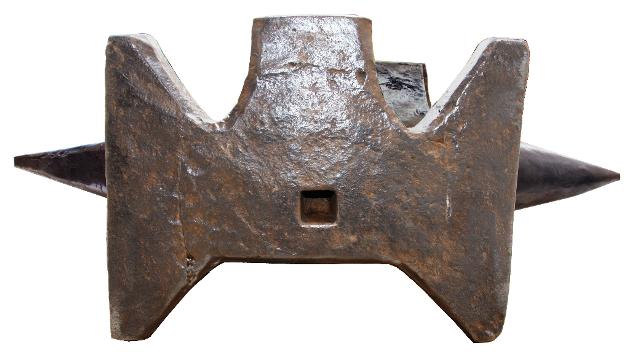
From the bottom you can clearly see where the feet were forge welded to the rectangular body block.
The body block starts as a simple rectangle with 4 handling holes (one visible above).
The handling hole in the top is plugged in the last step before welding on the hard steel face.
- Marks : S (circle) H, 1899, No.14, 332.5 Ko
In circle ( VERGISS MEIN NICHT ) "S&H" Translation "Forget Me Not".
Words surround four petal flower in center.
- Age : 1899
- Weight : 272 lbs. (123.5 kg)
German and Austrian Anvils
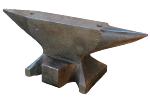
No.1 - 733 pound S and H German Anvil
Another anvil from Söding & Halbach in the Greenwood Collection.

No.5 - S and H German Anvil
Another Söding & Halbach anvil in the Greenwood Collection.
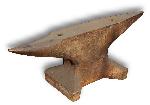
South German - Söding & Halbach
In Michael Siegrist's collection photographed by Stefaan Meeus while in Germany.

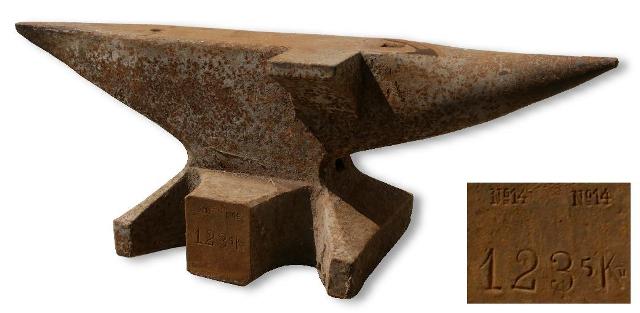








städ, incus, aambeeld, batente наковальня